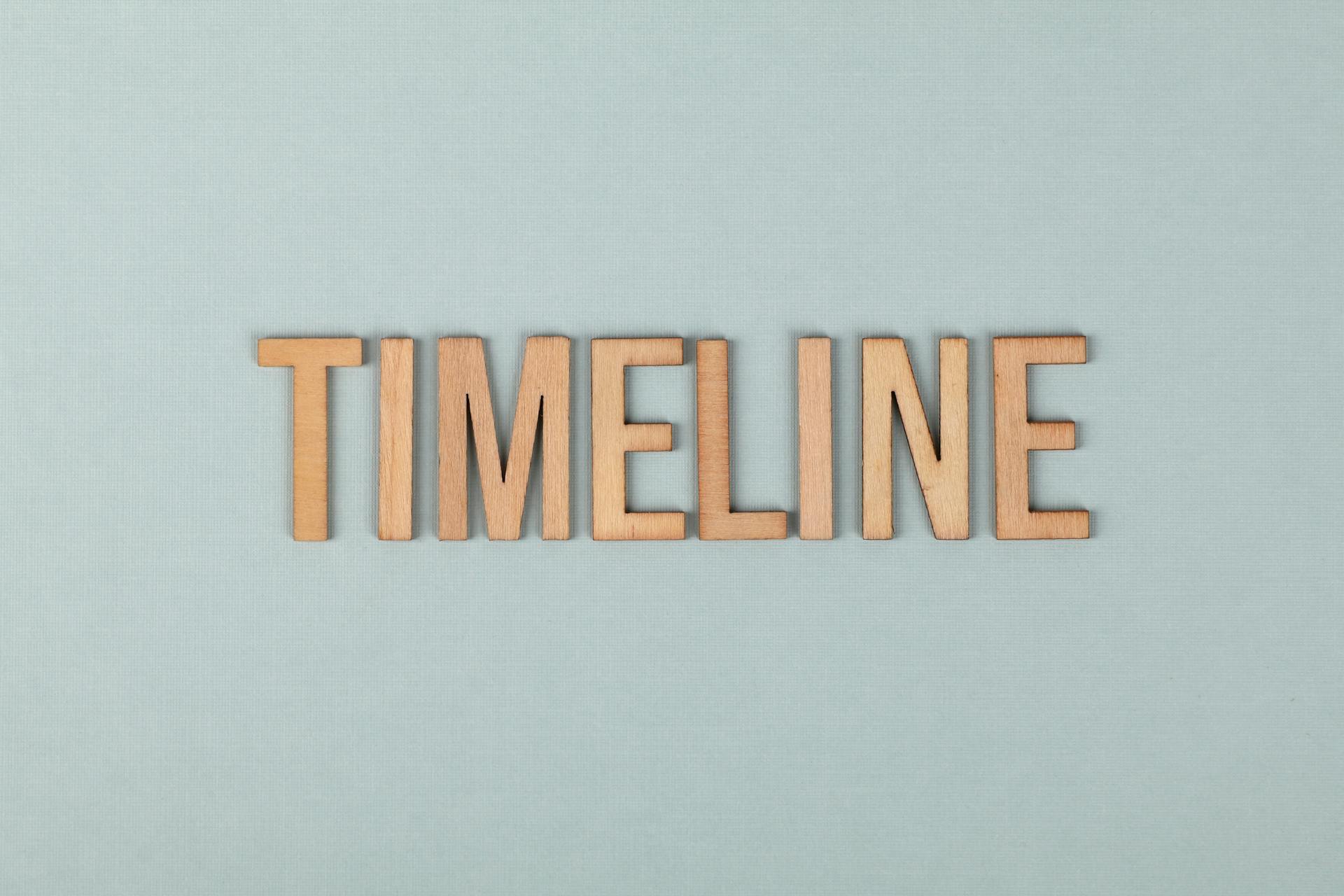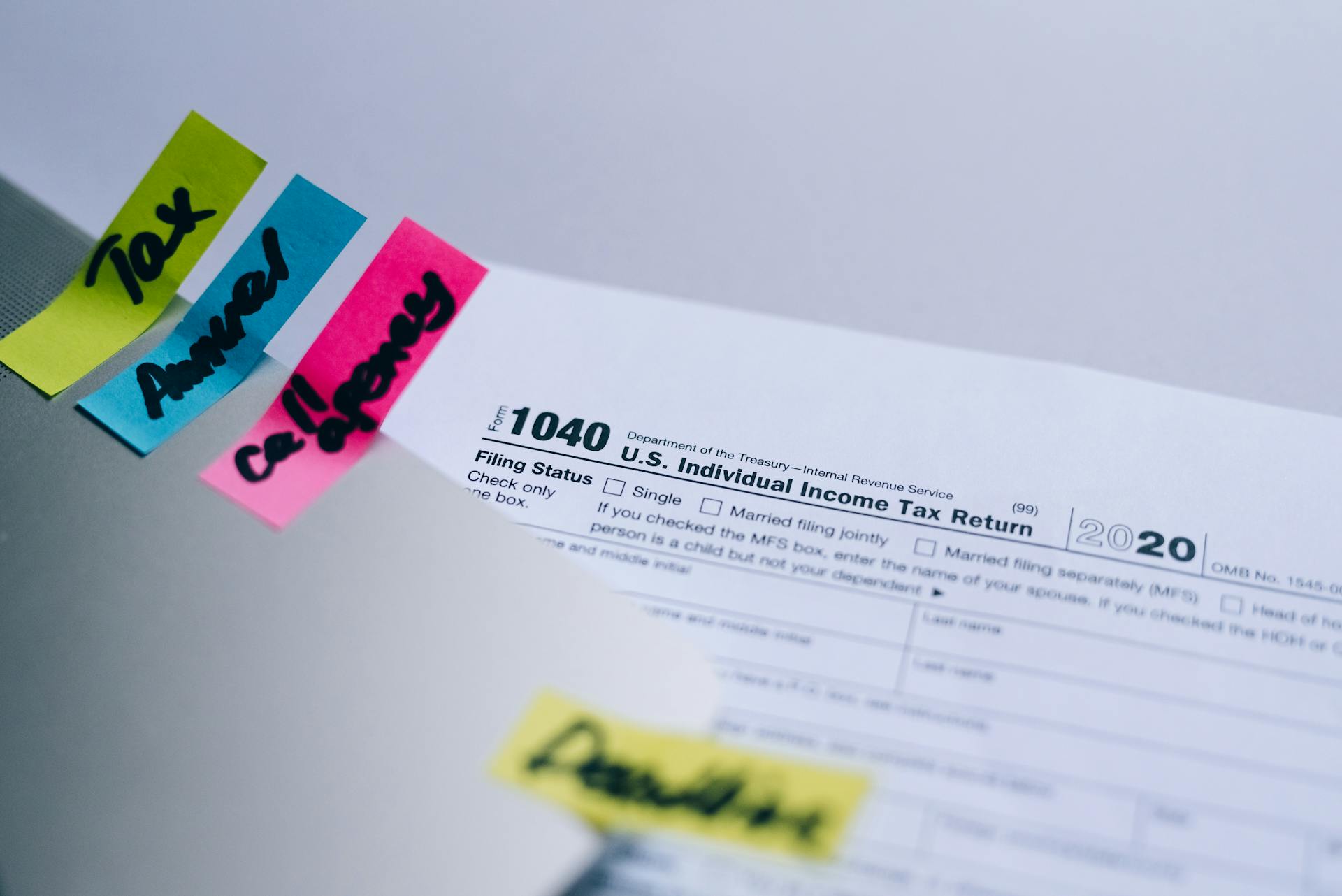
Consolidating student loans can be a huge weight off your shoulders, but it's not a process that happens overnight. The time it takes to consolidate student loans can vary depending on several factors, including the type of loans you have and the lender you choose.
Typically, the entire process can take anywhere from a few days to a few weeks. For example, if you're consolidating federal loans through the Department of Education, the process can take around 30 to 90 days.
Consolidation Process
The consolidation process is relatively straightforward. You can complete the direct consolidation loan application online in about 30 minutes, and it's always free to do so.
To get started, you'll need to log in to studentaid.gov and access the online direct consolidation loan application. It's essential to gather all the necessary documents beforehand, as you'll need to finish the application in one session.
The application will ask you to select which loans you'd like to consolidate, which student loan servicer you want to work with, and which repayment plan you prefer. You'll also need to provide references, but don't worry, the Education Department only uses them if they can't contact you directly.
Consolidation can impact your loan forgiveness eligibility, particularly if you have specific loan types. For example, if you have Perkins loans, consolidation will make you ineligible for Perkins loan forgiveness. Be sure to reach out to your servicer to confirm that you won't lose any loan forgiveness benefits.
The consolidation process typically takes four to six weeks to complete, and your loan servicer will let you know when the first payment is due on the consolidation loan. It's essential to continue making payments on your existing loans until you receive notice that your consolidation has been completed.
Here's a step-by-step overview of the consolidation process:
- Choose Loan & Servicer: Select which loans to consolidate and choose a loan servicer.
- Choose Repayment: Calculate your estimated monthly payments under several plans and choose a repayment plan.
- Terms & Conditions: Review and agree to the terms and conditions of the consolidated loan.
- Personal Information: Complete all borrower information and enter the names and contact information of two references.
- Review & Sign: Review your completed application, acknowledge the information, and sign the application.
Remember, consolidating your federal loans through the Department of Education is always free, so steer clear of companies that charge fees to consolidate loans for you.
Loan Options
When consolidating your student loans, you'll have to choose which loans to consolidate. This is done in the "Choose Loan & Servicer" section of the application, where you'll select which loans to combine and calculate the new consolidated loan amount and interest rate.
You'll also need to choose a loan servicer in this section. This is an important decision, as it will affect how you interact with the Department of Education and make payments on your consolidated loan.
The Department of Education offers several repayment options, which you'll explore in the "Choose Repayment" section of the application. This section will calculate your estimated monthly payments under several plans based on your income, family size, and tax status. You'll then choose a repayment plan before moving on to the next section of the application.
Here are the repayment options you can expect to see:
Consolidation vs Refinance
Consolidation vs refinance is a crucial decision when it comes to managing your student loans. Consolidation through the Education Department is available for federal student loans, but it doesn't lower your interest rate.
You can extend your loan term to lower your monthly payments, though. This can be a good option if you need to simplify your payments.
Refinancing, on the other hand, is available for both private and federal student loans through a private lender. It can save you money if you can lock in a lower interest rate. However, once you refinance a federal student loan, it becomes a private loan and is no longer eligible for federal programs like income-driven repayment or other loan forgiveness programs.
Here's a comparison of consolidation and refinancing:
You should consolidate your federal loans if you want to make a single monthly payment or need to consolidate to qualify for programs like Public Service Loan Forgiveness.
Parent Plus Loans
Parent Plus Loans can be a bit tricky to navigate, but understanding the basics can help you make informed decisions. Unconsolidated Parent Plus loans are not eligible for ANY Income-Driven Repayment (IDR) plans.
To access more affordable repayment options, you may need to consolidate your Parent Plus loans. Consolidation can make them eligible for Public Service Loan Forgiveness (PSLF) and IDR plans like Income-Contingent Repayment (ICR).
If you have two or more Parent Plus loans, you might be able to access the SAVE Plan through the temporary Double Consolidation Loophole.
However, be cautious if you consolidate Parent Plus loans with your own student loans - the entire consolidated balance will be limited to Standard repayment plans and the ICR plan, excluding more affordable IDR plans like SAVE.
Payment Reduction Possible
You can lower your monthly payments by consolidating your federal student loans. This is because consolidation combines multiple loans into a single direct consolidation loan, making it easier to manage your payments.
The interest rate on your consolidation loan will be a weighted average of the rates on your existing debt, which may also help reduce your monthly payments. This can be a big relief if you're struggling to make ends meet.
It's worth noting that consolidation can also extend your repayment period, which may increase the total interest you'd pay over the life of your loan. For example, consolidation could raise your repayment period from 10 years to 20 years.
However, consolidation can still be a good option if you need a lower monthly payment. You can check how consolidation will impact your monthly payment and total repayment period by logging in and viewing Steps 1 and 2 of the Direct Consolidation Loan Application.
You might enjoy: How Long Will It Take?
Application and Approval
The application and approval process for student loan consolidation can take some time, but it's worth it to simplify your finances and lower your monthly payments.
The direct consolidation loan application takes about 30 minutes to complete, and once you've submitted the correct paperwork, it typically takes four to six weeks for your loan consolidation to be completed. You can complete the application online at studentaid.gov, where you'll need to gather the necessary documentation and follow the prompts to select which loans to consolidate, choose a repayment plan, and provide personal and reference information.
The loan approval process takes between 30 and 90 days, but this varies by servicer. You'll receive your servicer's contact information at the end of the application process, and you can reach out to them with any questions about your application status.
Here's a summary of the application and approval process timeline:
- 30 minutes to complete the direct consolidation loan application
- 4-6 weeks for loan consolidation to be completed
- 30-90 days for loan approval, depending on the servicer
Remember to continue making payments on your existing loans until your servicer notifies you that the new loan has been disbursed and your loans have been consolidated.
Await Approval

After you submit your application, it's time to await approval. The loan approval process takes anywhere from 30 to 90 days, but this varies by servicer. You'll want to contact the consolidation servicer you selected with any questions about your application status.
Online applicants receive their servicer's contact information at the end of the application process, while paper applicants receive it when they download or print their application. In general, the approval process can take anywhere from 30 to 90 days.
During this time, continue making payments on your existing federal loans. This is because there will be a delay between your application, loan approval, and when your original federal loans are paid off. You'll know the new loan was disbursed and your loans consolidated when your servicer notifies you.
Here's a rough estimate of what to expect during the approval process:
Remember, it's essential to keep making payments on your existing federal loans until your servicer notifies you that the new loan was disbursed and your loans consolidated.
Begin Repayment
Once you've been approved for a student loan consolidation, it's time to start making payments. You'll have up to 60 days after loan disbursement to begin repayment.
The loan servicer will contact you with your payment schedule and the date of your first payment. This information will be based on the repayment plan you selected during the application process.
You won't have to make payments until closer to the date your existing loans were set to go into repayment, if you requested to delay consolidation. This can give you some extra time to get your finances in order.
The simple act of consolidating your student loans won't affect your credit much. You'll still have the same amount of debt at roughly the same interest rate.
A unique perspective: How Long It Will Take?
Sources
- https://studentaid.gov/articles/5-things-before-consolidating-student-loans/
- https://www.nerdwallet.com/article/loans/student-loans/consolidate-student-loans
- https://www.edcapny.org/resources-for-borrowers/consolidation-guide/
- https://finaid.org/loans/consolidation/
- https://www.forbes.com/advisor/student-loans/student-loan-consolidation/
Featured Images: pexels.com


